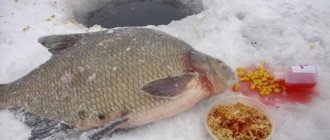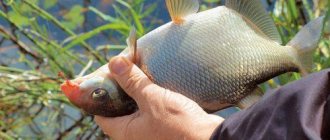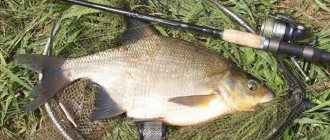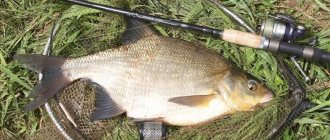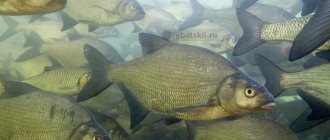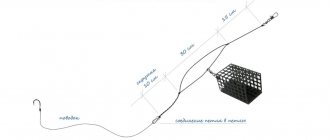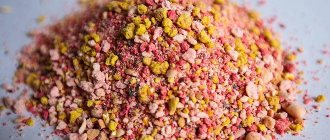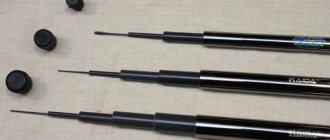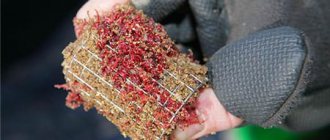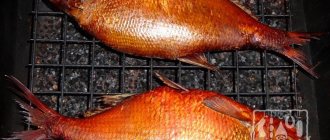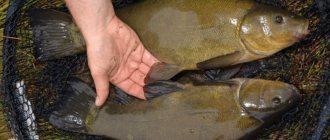The best vegetable baits for bream
Among the vegetable baits for bream, we will highlight the most popular ones.
Steamed pearl barley , which is often liked by large bream, is a good bait, but small fish can easily remove it from the hook. In addition, it cannot withstand power casts. Because of this, pearl barley is used when fishing with float rods or edges.
Corn or pea mastyr is a fairly common bait. It has a specific color and spicy smell. It attracts fish well.
Semolina is the most popular among vegetable baits. And the whole reason is its effectiveness. She has practically no flaws. The mixture does not become limp in water, sits well on the hook, and does not fly off during power casts. It is this last property that is very important, because bream lives far from the shore. Semolina is supplemented with a variety of flavorings to make it more attractive.
canned corn very often. This bait is specific. But it works very effectively on trophy bream.
How to properly feed bream
- It must be said right away that you need to go for bream, taking with you several types of complementary foods. The ingredients should be half ready. Bream is a peculiar fish: it can try one complementary food several times and then disappear.
- Complementary food should smell and be a sweet bait.
- Complementary food attracts and retains fish, but does not feed them.
- To prevent the mixture from falling apart, you need to add binding ingredients, and to make it fluffy and soft, you need sand.
- Lures should be thrown upstream of the area where fishing is planned.
- Bream also likes to sit in thickets, in muddy water (you can create this muddy water), and you need to fish with a feeder far from the shore.
Bream loves rivers with strong currents. Therefore, it is necessary to solve the problem of pinpoint penetration of complementary foods to the bottom. If there is excessive water activity, it is recommended to use a feeder with heavy feeders from ninety grams. The cast must be made at a low degree against the current to the same place.
When the load - the feeder - falls into the water, the rod must be put back in its original state, without reeling in the fishing line. This way the feeder will always end up in the same place.
Bream is a fish with character. You need to prepare carefully for bream fishing: in addition to the equipment, it is recommended to prepare several types of complementary foods.
Summer feeding for bream is mainly cereal with the addition of vanilla and anise. And the cooking methods are very simple. By following many of the tips described above, you can return from fishing with a big catch.
Best animal baits
The standard bait is a worm. Suitable for a variety of ways to catch large fish. It is the worm that provides the opportunity to catch a trophy bream.
Maggot for catching bream is a bait for all occasions. It is resistant to small fish bites. A few maggots placed on a hook are an excellent treat for bream. The bait can be used at any time for all types of fishing. However, in some reservoirs, due to the nature of the food in winter, bream will choose bloodworms, not paying attention to maggots.
Bloodworm is a bait that can be used with any method of catching bream. It is effective in winter or during the warm season. It is best to use bloodworms in the spring; at this time, bream are not interested in other types of bait. Well, in the summer you will have to be creative, because a bloodworm attached to a hook attracts small fish and this is very annoying. So in the summer they rarely catch bloodworms.
The bream is also caught on the goose (dragonfly larva); this fish bites on a caddisfly or on a small herbivorous leech. It is worth experimenting, because in different places the tastes of bream are different and it is often difficult to predict them.
Sometimes experienced fishermen use more exotic baits, for example, cut toothless pearl barley. Its meat is cut into small cubes and slightly dried in the sun. There have been cases when bream was caught on a piece of lard.
Where to catch bream
This species of carp is a schooling fish. The size of flocks can reach several hundred individuals of approximately similar size. The larger the fish, the smaller the school number. Based on these characteristics of their habitat, fish gathered in schools need large water areas with opportunities for parking and feeding areas for fish. The flocks' sites are located in parts of the reservoir remote from the shore with moderate or quiet currents and depths of three meters. Extensive holes in which water flows are slowed down by the relief structures of the bottom are ideal base points for schools of bream, which love constancy, sedentism and migrate short distances only for feeding and spawning.
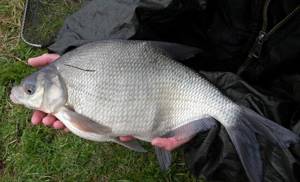
You can catch bream only on the way to the place of searching for food or directly at the feeding point. Consequently, the angler’s knowledge of the school’s movement paths is one of the foundations for successful fishing. As a rule, selected bottom plateaus with a silt layer are located at distances of up to a couple of hundred meters from the school’s parking areas. These bottom plains are associated with smooth rises to the coastlines and form shallow backwaters, fenced with thickets of reed and reed fields, where schools of bream graze, obtaining their food by digging in the silt deposits.
Important! Experienced breamers, looking for new hunting places, determine their prospects by the presence of many small air bubbles rising to the surface while a school of fish is feeding.
Clay and sand shallows inhabited by mollusk colonies will also be places of pilgrimage for schools, and the presence of a wall of coastal vegetation will only increase the chances of a promising bream point. All of the above listed signs of places suitable for fishing in most cases will require the fisherman to have a swimming device that will help to fish the selected point more effectively, and will also make it possible to get a decent distance from the shore to a remote part of the river or lake.
It is with great regret that we have to admit that in our time, catching bream from the shore is becoming a rare pleasure, due to the reduction of suitable places for fish to stay due to increased human activity, forcing bream to look for more secluded and quiet habitats away from the coastlines.
Artificial baits
Styrofoam is a lure that can be used as an independent bait or to lift a hook off the bottom of a lake or stream. As an independent bait, polystyrene foam is effective for feeder fishing; together with a feeder, it is used exclusively in reservoirs where the current is very weak. The foam additive adds attractive vibrations to the hook, which are effective precisely in the current.
Dough pellets are dried dough casts threaded through with a piece of thread. Just in time for the thread, the pellet is attached to the hook. This bait is effective in strong currents when fishing with side rods. If you use leashes of 1-2.5 meters, the effectiveness of the bait increases greatly.
Basic fishing methods
Winter gear
Rocker
A simple and quite effective method of winter fishing for bream. The tackle has many advantages over others, namely:
- Large and cautious fish are caught on the yoke.
- Significantly unloads the gear.
- Makes it possible to catch bream at the bottom of a muddy pond, where a jig or sinker is useless.
Mormyshka
The jig for winter fishing is:
- motionless,
- playing.
In a stationary jig, the main role is played by the nod.
It plays the role of a signaling device instead of a float. The fishing rod must be placed above the hole so that the nod bends under the weight of the jig, and the jig itself should only touch the bottom. The playing jig works on the fish's reaction to the movement of objects. The small oscillating body creates local currents that the bream catches. Thus, the movement of living organisms is imitated, inducing the fish to bite.
Float rod
There are 2 types of float rod for winter fishing for bream:
- for standing water,
- for the current.
The winter fishing rod is equipped with:
- fishing rod,
- fishing line,
- crochet,
- sinker,
- float
You can buy a fishing rod in the store, or you can make it yourself.
A convenient fishing rod for winter is one with a wooden pencil case handle, a reel and a stand in the form of legs.
Shore fishing in open water
- Feeder . In order to catch bream on a feeder, you need to choose the right place. This place is located between the strong and small currents of a reservoir or river. It is good to fish with a feeder near holes 3-5 m deep. The feeder rod should be strong and flexible, a fishing line 0.14 mm thick, two leashes 0.08-0.1. The length of the leash is 25-50 cm, with equipment 30-60 cm, hook size 4-6 for corn, 8-12 for a sandwich of bloodworms and maggots.
- Rubber. Fishing with a rubber band is simple and effective. The rubber bottom tackle consists of the following elements:
- Loading the gum.
The rubber itself.
- Leashes and hooks.
- Float tackle. The most common tackle for catching bream. It must be strong and durable, and it must be thrown far. Acceptable length is 4-4.5 m.
- A pole rod is the most effective tackle, but fly rods and mast rods are also suitable. The main thing is that the bait gets to the right place. The bream does not really resist when it gets hooked, so there is no point in using strong carp tackle.
- Donka. With the help of a donkey, you can catch bream in windy weather and in bad weather, when it hides in the depths. An ordinary fishing rod is useless here. There are many varieties of donks, but the following elements are mainly present:
- rod,
- fishing line,
- spring,
- leash,
- hook,
- sinker.
An ordinary donka with a rubber shock absorber showed itself to be a very catchy tackle.
They are caught mainly in stagnant lakes, from the shore, and rarely from a boat. A stick is stuck on the river bank, a cut is made in the middle into which a fishing line is attached.
coil,
There is nothing complicated, everything is simple, any element is sold in the store. The main thing is to properly equip the donk depending on the fishing location.
Fishing from a boat
Fishing from a boat with a strong current using a ring has proven itself well .
The ring is made of lead, round; it is replaced by an ordinary washer. The length of the fishing rod is small, 0.7 m, between the hooks there should be approximately 0.5 m.
The boat is equipped with 2 anchors, a net for feeding, and the tackle itself. The signal is a nod with a bell.
To better feel the bite of a fish, many fishermen wrap the fishing line around their fingers. The boat is anchored 20-30 m above the found flock.
Other baits
A separate type of bream bait are boilies on a hair rig. This bait should measure 8-12 mm. If the size is smaller, small fish may bite. In this case, both bottom and float tackle are used.
You can buy boilies, but you can also prepare them at home. The recipe is simple. You need to take 100 g of ground seeds, 10 g of sugar, 10 g of flour and 30 g of egg powder. Knead this into a thick dough, stand, roll into balls, boil, and then dry. The finished bait is placed in a plastic bag with the addition of a small amount of ground flour and placed in the refrigerator.
Experienced bream fishermen recommend using combinations or “sandwiches” as bait:
- pearl barley and maggots;
- corn and worm;
- worms and maggots;
- bloodworms and worms (sometimes dough is added);
- bloodworms and maggots.
Such combinations are very effective when fishing.
DIY bait for bream
To catch bream, you need a lot of bait mixture, since it is not clear in advance what the activity of the fish will be and how often food will have to be supplied to the fishing area. If the bait suddenly runs out, then you can safely reel in the gear and go home - there will be no bite. Fishing stores sell a wide variety of mixtures.
Advanced and professional brands are expensive, so purchasing them is a costly affair for a simple fisherman, and budget products do not show the expected results. In this case, the most reasonable solution would be to make your own bait for bream at home. Let's look at several recipes for its production.
First recipe
- Boil oatmeal and millet in the required quantity over low heat. Be sure to make sure that the porridge does not burn, otherwise the unpleasant smell will not allow you to make attractive bait.
- Arriving at the reservoir, we mix the porridge with sand and soil obtained from the river bank.
- Add breadcrumbs, peeled sunflower seeds, and vanilla to the resulting mixture. You can fill the mixture with chopped worms or bloodworms.
That's it, the simplest bream mixture is ready. All that remains is to make balls with a diameter of about 10 cm, make a starting feed and periodically throw them into the water, keeping the fish in the fishing zone.
Second recipe
A little more complicated in terms of ingredients, but just as easy to make. We recommend you take note of this:
- Directly on the pond in a bowl, mix bran, corn or oat flakes, sunflower cake, bloodworms or maggots, coffee drink or ground coffee beans.
- Add clay from the bottom of the reservoir and water also taken from there to the prepared mixture.
- Mix the mixture until thick. Let it brew for a few minutes.
Similar to the first case, we make balls and send them into the water in portions.
Advice! Breadcrumbs are the most versatile aromatic component of a homemade mixture for bream fishing.
Third recipe
The most complex of those presented in this section, but it is the most versatile; it works throughout the open water season; in addition to bream, it can be used for hunting roach, crucian carp and crucian carp. Does this:
- Boil 3–3.5 cups of water in an enamel pan.
- When the water boils, add 2.5 cups of barley to it.
- Cook it until half cooked and then, as the pearl barley swells, add millet to the pan.
- Cook the porridge until almost all the water has boiled away.
- Then turn off the pan, cover it with a lid and let it brew for about 45 minutes.
- You can add vanilla, sunflower oil, and other flavorings to the cooked porridge.
When going to a pond, we transfer the porridge to another container, mix it with corn grits, and add clay directly on the river bank. You can throw one or two handfuls of small bloodworms, maggots or earthworms, chopped into pieces, into a bucket of bait.
The advantages of bait made at home are:
- cost savings;
- you can come up with the recipe for the mixture yourself;
- full control over the cooking process.
However, preparing bait with your own hands will take time. The fisherman will have to control the process in order to make a working and catchable mixture.
Features of choosing bait and bait for bream
Depending on the season, the food preferences of bream differ. So to catch it you have to prepare different baits and lures.
Bait in spring
In early spring, bream prefers maggots, bloodworms, caddis flies or worms. If the reservoir is rich in bloodworms, it is preferable to use this type of bait. To catch trophy bream, a worm is used, but for this the water must warm up a little. It is allowed to use different “sandwiches” from maggots and bloodworms, worms and maggots.
If the water warms up and spawning time approaches, you can use vegetable baits: steamed pearl barley and peas, canned corn, bread crumb, semolina porridge or mastyrka. Artificial baits such as foam and test pellets are also effective.
As for bait, be sure to use ingredients that contain sugar: canned corn, the smell of cinnamon, vanilla, fennel, coriander.
A good effect is obtained by adding these components to millet, peas, rolled oats, and pearl barley. You can also add some chopped worms. To form a cloud of turbidity, it is useful to add 2 a little cocoa. And fruit essence will add sweetness to the bait.
Lure in summer
In summer, bream bite on baits of animal origin: bloodworms, maggots, and worms. Vegetable baits used include mastyrka, peas, corn and pearl barley. An excellent result is ensured by the combination of mastyrka and worm. Often, aromatic dough is added to them.
As for baits, you can use both branded and your own mixtures. The main ingredients when preparing your own bait: corn, crackers, millet, oatmeal and sunflower cake. Powdered milk is used to create mule cloud and attract fish. Not a bad result and artificial flavors. But you can't overdo it.
Bait in autumn
In the fall, bream gather in schools to feed before winter. He's very careful. During this period, experienced fishermen recommend taking with you all available types of bait and experimenting. After all, the fish is often capricious and bites uncertainly. It is best to use a bunch of bloodworms as a bait. Also good is maggot or “sandwich”: maggot and bloodworms. Large bream bites on the worm as always.
And of course – the right bait. In autumn it should contain a lot of proteins, because bream tries to gain more fat. Therefore, it must contain maggots and bloodworms. The role of a flavoring agent can be played by the smell of thyme; it is better not to use others.
To attract large bream you need to mix maggots, chopped worms and millet porridge with clay.
In addition, bait made from bran, crackers and sunflower cake, to which bloodworms and maggots are added, has a good effect.
Bait in winter
In winter, bream bite much weaker than in other periods. Practice shows that at this time you can fish with bait of animal origin, however, in addition to maggots and bloodworms, you can also choose soft vegetable baits: steamed pearl barley and dough. You can fish with “sandwiches”: bloodworms and maggots.
Winter bait is not very diverse. Experts recommend completely avoiding flavorings.
The most effective simple baits: cakes and bran, crackers, familiar and effective products with various additives of millet porridge, hemp, pearl barley and peas. It is worth adding small food bloodworms. But the quality of the bait must be high. It is better to choose crackers from black bread and bake them before fishing, and then grind them to a fine fraction.
Lures for bream
Lures for catching bream can be divided into seasonal and universal. A bunch of bloodworms, dung worms, earthworms, maggots or a “sandwich” made from them is suitable for any body of water, both in open water and for winter fishing.
In the warm season, the range of baits increases significantly due to the use of plant baits:
- Steamed grains: wheat, rye, pearl barley, oats, corn, peas.
- Canned peas and corn.
- Bread crumb and dough with the addition of minced meat.
- Ground porridge or mastyrka: millet, semolina, corn, buckwheat, oatmeal.
Choosing an effective plant bait for catching bream in an unfamiliar body of water is quite difficult. Therefore, it is necessary to consult with other fishermen, and in case of their absence, experiment on your own. In this case, the method of putting a maggot or piece of worm together on a hook with the plant bait being tested works well.
Choosing bait according to fishing location
When fishing for bream on a river with a strong current, especially when fishing, it is best to use baits that can stick well to the hook. A good effect is provided by bloodworms, red worms, maggot pupae, grains of barley or corn.
If you are fishing for bream in a canal, you should choose a small bait. 4 maggots on a hook or small red worms are best. Bloodworms and maggot pupae also provide a good effect.
When fishing on a lake, you should not use small bait, otherwise small fish will bother you.
The most catchy baits on bodies of water without current are:
- red worm or a bunch of small red worm;
- part of the crawl, and if a large fish bites, then the whole one;
- pasta “horns”;
- corn, 2-4 grains per hook;
- potato cubes, 1 cm in size;
- semolina dough;
- a bunch of maggots, but only in the absence of small fish.
When fishing in a reservoir, plant baits are used less frequently, giving way to animal baits.
How to catch bream
There are two main directions of bream fishing: bottom and float fishing. You can catch bream using both the first and second methods throughout the year, including the possibility of fishing from ice, making allowances only for the selection of a certain size and type of fishing rod. Float rigs are mounted on fly, Bologna and match fishing rods. Bottom fishing is carried out by equipping spinning rods in special ways, which among fishermen are called zakidukhs, using feeder equipment, using classic bottom tackle in the form of a rubber donkey or a net.
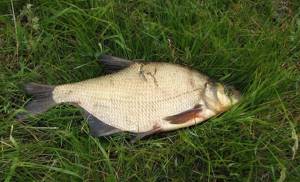
Due to the peculiarities of installing rigs based on the conditions of the chosen fishing location, bream fishing is carried out both from the shore and from a boat. The wariness of the fish forces the fisherman to use delicate gear using fishing lines of maximum diameter, which places special demands on equipping fishing rods with reels with precise adjustment of the friction and the use of shock-absorbing devices in the form of feedergam on the gear.
In summer, you need to catch bream from the shore in an extremely quiet environment, avoiding unnecessary activity that causes noise and unnecessary splashes in the water. Approaches to fishing spots from a boat should be made at a slow speed and against the current. Even with all the precautions and care taken by the fisherman, bream begins to bite at the fishing site an hour or even more after the placement and installation of gear.
How to catch bream from the shore in summer
Fishing from the shore is more successful using bottom gear at long distances, since fish in rare cases can come close to the coastlines. The strategy of ambush fishing over several days will be the most acceptable option to obtain a significant result. Fishing for bream on the river in summer begins with the intensive formation of a feeding spot and the subsequent installation of rigs. On the shore, from five to ten casters are installed on flyers, delivering baits to the fishing zone and equipping the rods with sound alarms.
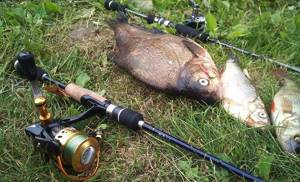
The fishing session should continue during both daylight and darkness. The nozzles are checked only after bites, trying once again not to create noise. The supply of bait is carried out after landing the caught fish, knowing that the school has temporarily moved away from the fishing point due to the noise of the fight with the caught fish. The bream bite is sharp, with a strong pull on the line, which requires immediate hooking. Fishing is complex, characterized by strong resistance from the fish at the initial stage, until it rises to the surface of the water. After rising to the surface, as fishermen say, the fish is testing the air, the trophy calms down and, lying on its side, is pulled to the shore, where it is brought into the landing net.
Read more about the tactics and techniques of catching bream on a feeder and preparing equipment.
How to properly catch bream from a boat
It is easier for an angler to reach a promising place from a boat, so fly or Bolognese tackle becomes a priority in the hunt for a trophy. Bait is fed into the fed area, trying to keep the bait a couple of centimeters from the bottom. The wait for a bite can last from ten minutes to two hours. The bite looks like a slow movement of the float to the side and its subsequent ascent, as the floaters say at this moment - the float is down. The float signal indicates immediate hooking. The ring fishing method will help you catch bream in the current. This bottom rig is installed from a tightly moored boat a couple of tens of meters from the bait supply point. Bait floating with the current, released from a boat, attracts fish to the bait with a cloudy trail. This method is used to fish deep riverbed holes, mainly hunting for trophy specimens of bream.
Recipes for making bream bait yourself
In the summer, the following bait is used to attract large bream. A little sugar and honey are added to the boiled pearl barley. A few drops of sunflower oil are also added. Then the pearl barley must be thoroughly mixed until the sugar and honey are completely dissolved. The honey-sunflower smell is an excellent bite activator when fishing for bream. And the sweet taste will make the fish swallow the bait.
Bread with bloodworms is also a good bait. It is prepared very simply: half a loaf of bread is kneaded with bloodworms (about 100 g of larvae). The result should be a homogeneous dough. For bream, such bread will be much tastier, and the bait can be used at any time of the year. After all, even in winter this fish shows vegetarian preferences.
Another good bait are millet balls. To prepare them, you need to take 2 glasses of milk, add a glass of millet and boil over low heat until completely dissolved. A teaspoon of honey is added to the resulting mixture and everything is thoroughly mixed. In this case, you should try to grind the grains until a dough-like mixture is formed. Then the bait should be brought to condition in the oven, setting the fire to low. Before the finished bait cools, you need to add 5-6 drops of hemp oil to it.
Blitz tips
Experienced bream fishermen know the secrets that allow them to catch this cautious and rather capricious fish.
- An earthworm or dung worm is the most common bait for bream. Often this fish bites on a giant worm - a crawler. What makes this bait so popular is its accessibility: the worm can be found almost everywhere.
- Among the baits when catching bream on a feeder, the leaders are corn and unpeeled peas. They do not attract small fish and are used for catching large bream.
- When using semolina balls (also a catchable bait), you need to make sure that the semolina is not loose, otherwise it will fly off the hook when it hits the water.
- The bloodworm is placed on the hook only in a bunch, which is connected using a special knitting device. This royal bait can be used at any time of the year in all bodies of water.
Animal bait
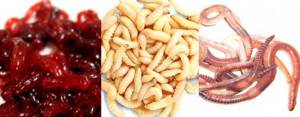
Such baits are considered priority in relation to catching bream. They can be used at any time of the year, but they may be most effective in spring or autumn, when the water has not yet warmed up significantly. During periods of summer heat, bream can concentrate on baits of plant origin. Although during this period he can safely take bait of animal origin. Therefore, when going fishing, it is better to stock up on a whole range of baits and attachments. This will make it possible to determine the preferences of this interesting and desirable fish directly on the reservoir.
Baits of animal origin for catching bream include:
- dung (earth) worm;
- crawling out;
- maggot;
- bloodworm.
This type of bait is considered universal and can be used to catch other fish. Therefore, the fisherman should prepare for the fact that his catch will consist of several species of fish, including bream. As a rule, this does not cause any particular problems for any angler. But if you want to catch only bream, you will have to seriously try.
Muckworm

This is a bait that can catch any fish. Therefore, if a dung worm is used, then you need to be prepared for various surprises. Another thing is that you can do it in such a way that small fish cannot take the bait into their mouth. In this regard, not one worm is put on the hook, but several at once. As a result, a cluster of worms is formed and small fish, no matter how much they want it, will not be able to cope with such bait. In this case, only large fish will be caught. Even if you catch a large crucian carp, this is already a big plus.
Crawling out
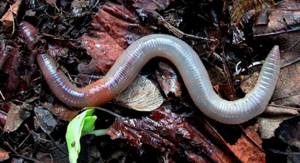
This is a large earthworm, which is often used even for catching catfish. If you bait it on a hook, then you can assume that this bait will work on large bream, as well as carp or carp.
Maggot

This is a bait that no fish, including bream, will refuse. But here it is important to cut off any “trifles”, otherwise even high water can be observed in the catch. To prevent this from happening, it is better to place large maggots and several pieces on the hook.
Bloodworm
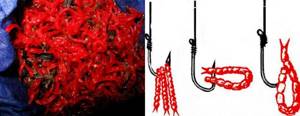
Also used for catching bream. But the bloodworm is very fragile and small, so the bream does not have time to bite first. This is primarily done by smaller fish. Therefore, bloodworms will be able to provide a catch of very diverse and not very large fish.
